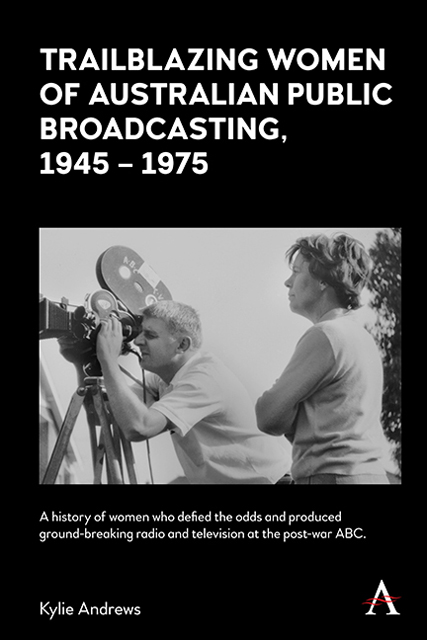Book contents
- Frontmatter
- Dedication
- Contents
- List of Figures
- List of Abbreviations
- Preface
- 1 Introduction
- 2 Career Snapshots
- 3 Welcome to the ABC, Ladies
- 4 The New Nation-Builders
- 5 Talent Was Not Enough
- 6 Thinking Outside the Box
- 7 Timely Escapes and Bittersweet Homecomings
- 8 International Adventures and Global Networking
- 9 Farewell to the ABC
- 10 Epilogue
- Reference List
- Index
- Frontmatter
- Dedication
- Contents
- List of Figures
- List of Abbreviations
- Preface
- 1 Introduction
- 2 Career Snapshots
- 3 Welcome to the ABC, Ladies
- 4 The New Nation-Builders
- 5 Talent Was Not Enough
- 6 Thinking Outside the Box
- 7 Timely Escapes and Bittersweet Homecomings
- 8 International Adventures and Global Networking
- 9 Farewell to the ABC
- 10 Epilogue
- Reference List
- Index
Summary
Revising Limited Historical Narratives
By revisiting the careers of Kay Kinane, Therése Denny, Catherine King and Joyce Belfrage, it is evident that women made substantial contributions to the development of Australian public broadcasting in the post-war era. From production secretaries to producers, women battled to overcome restrictive gender constructs in order to see their ambitions realized. Kay, Therése, Catherine and Joyce marshalled their resources and applied a range of clever strategies to forge their careers. They enacted their own version of feminism, a social and cultural activism framed through active citizenship and sought to critique the social and cultural complacencies that dominated post-war society. They saw the ABC as a powerful conduit through which they could contribute to public discourse. Trying to come to terms with their own biases and privilege, they wanted Australians to embrace new ways of thinking about their world and worked to disrupt media cultures that served Anglo-Australian perspectives.
It is unsurprising that the ABC fostered a gendered workplace in the postwar decades. Despite its democratic remit, the organization was a creature of its time. What is surprising, however, is the degree to which so many media histories sustain a narrow focus; they have tended to privilege the agendas and interests of male broadcasters. Media histories are compromised when we rely on traditional narratives and fail to interrogate the gendered cultures and customs that influenced them. When ignored, they take on more validity. As Louise Tilly and Joan Scott point out, the consequence is that women are assumed to be ‘insignificant as objects of study because they were somehow lesser in ability, achievement and potential than were men’. Females working in the sound and screen industries have, in fact, consistently challenged discriminatory cultures and hierarchies throughout the twentieth century. This becomes clear when historians recognise the artificial constructs in historical thinking and look for evidence of the ways women in radio and television were active, engaged and missionoriented. As Michele Hilmes reminds us, women have long been ‘participants in broadcasting's social address, actively competing for control over their voices and venues, vying for the right to speak and be heard by the public at large’.
- Type
- Chapter
- Information
- Trailblazing Women of Australian Public Broadcasting, 1945-1975 , pp. 197 - 198Publisher: Anthem PressPrint publication year: 2022

